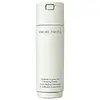What's inside
What's inside
 Key Ingredients
Key Ingredients

 Benefits
Benefits

 Concerns
Concerns

No concerns
 Ingredients Side-by-side
Ingredients Side-by-side

Zea Mays Starch
AbsorbentSodium Cocoyl Isethionate
CleansingSodium Lauroyl Glutamate
Sodium Lauroyl Aspartate
CleansingSodium Cocoyl Glycinate
CleansingCamellia Sinensis Leaf Powder
ExfoliatingSolanum Lycopersicum Fruit
EmollientTrehalose
HumectantAllantoin
Skin ConditioningMaltodextrin
AbsorbentWater
Skin ConditioningPapain
Skin ConditioningGlucose
HumectantBromelain
Skin ConditioningGluconolactone
Skin ConditioningGlyceryl Glucoside
HumectantSodium Hyaluronate Crosspolymer
Humectant1,2-Hexanediol
Skin ConditioningSodium Hyaluronate
HumectantHydrolyzed Hyaluronic Acid
HumectantGlycerin
HumectantHydrolyzed Glycosaminoglycans
HumectantHyaluronic Acid
HumectantGlycosphingolipids
EmollientCeramide NP
Skin ConditioningPueraria Lobata Root Extract
HumectantPinus Palustris Leaf Extract
TonicUlmus Davidiana Root Extract
Skin ConditioningOenothera Biennis Flower Extract
AstringentBenzyl Glycol
SolventEthylhexylglycerin
Skin ConditioningHydrogenated Lecithin
EmulsifyingRaspberry Ketone
MaskingButylene Glycol
HumectantPropanediol
SolventZea Mays Starch, Sodium Cocoyl Isethionate, Sodium Lauroyl Glutamate, Sodium Lauroyl Aspartate, Sodium Cocoyl Glycinate, Camellia Sinensis Leaf Powder, Solanum Lycopersicum Fruit, Trehalose, Allantoin, Maltodextrin, Water, Papain, Glucose, Bromelain, Gluconolactone, Glyceryl Glucoside, Sodium Hyaluronate Crosspolymer, 1,2-Hexanediol, Sodium Hyaluronate, Hydrolyzed Hyaluronic Acid, Glycerin, Hydrolyzed Glycosaminoglycans, Hyaluronic Acid, Glycosphingolipids, Ceramide NP, Pueraria Lobata Root Extract, Pinus Palustris Leaf Extract, Ulmus Davidiana Root Extract, Oenothera Biennis Flower Extract, Benzyl Glycol, Ethylhexylglycerin, Hydrogenated Lecithin, Raspberry Ketone, Butylene Glycol, Propanediol
Mannitol
HumectantSodium Cocoyl Glycinate
CleansingSodium Lauroyl Glutamate
Zea Mays Starch
AbsorbentSilica
AbrasiveBetaine
HumectantAllantoin
Skin ConditioningPotassium Laurate
EmulsifyingParfum
MaskingWater
Skin ConditioningDextrin
AbsorbentTrehalose
HumectantButylene Glycol
HumectantDisodium EDTA
Dipotassium Glycyrrhizate
HumectantButylphenyl Methylpropional
PerfumingLactobacillus Ferment Lysate
Skin ConditioningLimonene
PerfumingGeraniol
PerfumingSodium Hyaluronate
HumectantCamellia Sinensis Leaf Water
MaskingGossypium Herbaceum Extract
Skin ConditioningCI 19140
Cosmetic Colorant1,2-Hexanediol
Skin ConditioningEthylhexylglycerin
Skin ConditioningMannitol, Sodium Cocoyl Glycinate, Sodium Lauroyl Glutamate, Zea Mays Starch, Silica, Betaine, Allantoin, Potassium Laurate, Parfum, Water, Dextrin, Trehalose, Butylene Glycol, Disodium EDTA, Dipotassium Glycyrrhizate, Butylphenyl Methylpropional, Lactobacillus Ferment Lysate, Limonene, Geraniol, Sodium Hyaluronate, Camellia Sinensis Leaf Water, Gossypium Herbaceum Extract, CI 19140, 1,2-Hexanediol, Ethylhexylglycerin
Ingredients Explained
These ingredients are found in both products.
Ingredients higher up in an ingredient list are typically present in a larger amount.
1,2-Hexanediol is a synthetic liquid and another multi-functional powerhouse.
It is a:
- Humectant, drawing moisture into the skin
- Emollient, helping to soften skin
- Solvent, dispersing and stabilizing formulas
- Preservative booster, enhancing the antimicrobial activity of other preservatives
Allantoin is a soothing ingredient known for its protective and moisturizingg properties. Because of this, it is often added to products with strong active ingredients.
Studies show higher concentrations of this ingredient can promote wound healing.
Though it can be derived from the comfrey plant, allantoin is produced synthetically for cosmetic products to ensure purity.
Learn more about AllantoinButylene Glycol (or BG) is used within cosmetic products for a few different reasons:
Overall, Butylene Glycol is a safe and well-rounded ingredient that works well with other ingredients.
Though this ingredient works well with most skin types, some people with sensitive skin may experience a reaction such as allergic rashes, closed comedones, or itchiness.
Learn more about Butylene GlycolEthylhexylglycerin (we can't pronounce this either) is commonly used as a preservative and skin softener. It is derived from glyceryl.
You might see Ethylhexylglycerin often paired with other preservatives such as phenoxyethanol. Ethylhexylglycerin has been found to increase the effectiveness of these other preservatives.
Sodium Cocoyl Glycinate is a cleansing agent. It can be naturally derived or synthetically-created.
As a surfactant, it helps clean your skin by gathering dirt, oil, and other pollutants to be rinsed away more easily.
Sodium Hyaluronate is hyaluronic acid's salt form. It is commonly derived from the sodium salt of hyaluronic acid.
Like hyaluronic acid, it is great at holding water and acts as a humectant. This makes it a great skin hydrating ingredient.
Sodium Hyaluronate is naturally occurring in our bodies and is mostly found in eye fluid and joints.
These are some other common types of Hyaluronic Acid:
Learn more about Sodium HyaluronateSodium Lauroyl Glutamate is the sodium salt from the lauric acid of glutamic acid.
It is a surfactant and helps cleanse the skin. Surfactants gather oil, dirt, and other pollutants from your skin so they may be washed away easily.
Trehalose is a disaccharide made of two glucose molecules (glucose is sugar!). Trehalose is used to help moisturize skin. It also has antioxidant properties.
As a humectant, trehalose helps draw moisture from the air to your skin. This helps keep your skin hydrated.
Due to its antioxidant properties, trehalose may help with signs of aging. Antioxidants help fight free-radical molecules, unstable molecules that may damage your skin.
In medicine, trehalose and hyaluronic acid are used to help treat dry eyes.
Some animals, plants, and bacteria create trehalose as a source of energy to survive freeze or lack of water.
Learn more about TrehaloseWater. It's the most common cosmetic ingredient of all. You'll usually see it at the top of ingredient lists, meaning that it makes up the largest part of the product.
So why is it so popular? Water most often acts as a solvent - this means that it helps dissolve other ingredients into the formulation.
You'll also recognize water as that liquid we all need to stay alive. If you see this, drink a glass of water. Stay hydrated!
Learn more about WaterZea Mays Starch is starch made from corn. You might know this as cornstarch . It is used to thicken a product. It can replace talc as an absorbent.
The pH of cornstarch is 5.92.
Cornstarch is a common food ingredient used to thicken soups or to make corn syrup.
Learn more about Zea Mays Starch